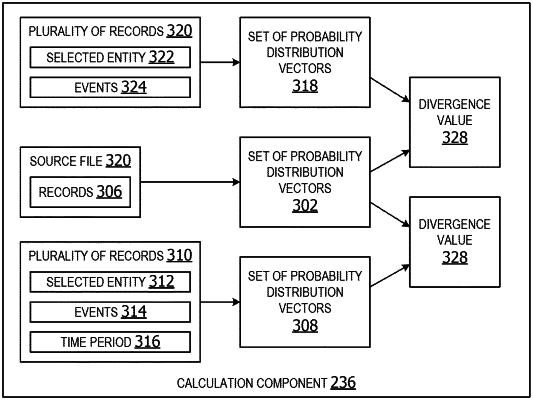| CPC H04L 63/1416 (2013.01) [G06F 16/219 (2019.01); G06F 16/2462 (2019.01); H04L 63/102 (2013.01); H04L 63/104 (2013.01); H04L 63/1425 (2013.01)] | 20 Claims |

|
1. A system for predictive detection of breached entities associated with compromised records from a breach, the system comprising:
at least one processor; and
at least one memory comprising computer program code that, when executed by the at least one processor, is operable to:
identify a plurality of matching records each having an identification number and expiration date pair matching an identification number and an expiration date pair of one of a plurality of compromised records associated with a source file;
select a set of candidate entities each having at least one event associated with at least one of the plurality of matching records during a time period;
generate a first set of probability distribution vectors for the plurality of compromised records associated with the source file;
generate a second set of probability distribution vectors for a first plurality of records stored by a first entity selected from the set of candidate entities during a first time period;
generate a third set of probability distribution vectors for a second plurality of records stored by a second entity selected from the set of candidate entities during the first time period;
calculate a first divergence value representing a distance between the first set of probability distribution vectors and the second set of probability distribution vectors;
calculate a second divergence value representing a distance between the first set of probability distribution vectors and the third set of probability distribution vectors;
select the first entity as a predicted breached entity on condition the first divergence value is less than the second divergence value; and
select the second entity as the predicted breached entity on condition the second divergence value is less than the first divergence value.
|